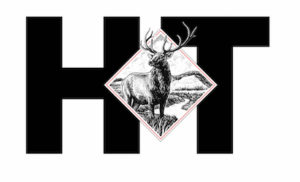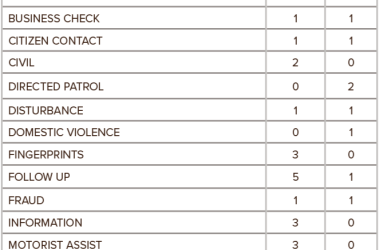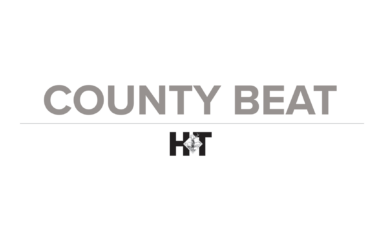Considering the debates, confusion, and misconceptions revolving around BLM’s Wild Horse Management, I would like to share my knowledge on this issue after extensive reading and research. I would like to thank the Animal Welfare Institute for their permission as a resource for the following myths and facts.
RBC I Myth: There are too many wild horses and burros on public lands and their numbers must be reduced.
Fact: The opposite is true — there are too few wild horses and burros on our public lands and unless their numbers grow, the survival of these animal species is in jeopardy.
Wild horses comprise a minute fraction of grazing animals on public lands, where they are outnumbered by cattle at least 200 to 1. The 1971 Act states that in a given area, a certain amount of vegetation may be eaten as forage. Only when that amount is exceeded are there too many animals. The BLM has overwhelmingly favored cattle in setting “appropriate” wild horse population levels, resulting in indiscriminate removal of horses and burros from public lands. From more than 2 million in 1900, our wild horse population has dwindled to less than 25,000. Many wild horse and burro herds are being managed at such dangerously low numbers that their long-term health and genetic viability are seriously imperiled.
Myth: Wild horses are suffering from drought and starvation out on the range.
Fact: Mismanagement is at the root of most of these problems. Despite federal protection, wild horses have been relegated to the most inhospitable areas of the range. Still, they have adapted and survived; most horses rounded up by BLM are well-fed and healthy. Wild horses have survived droughts and fires in the past and will survive them in the future, just as other wild animals do if they are treated as wild animals and left alone.
Myth: Wild horses and burros are destructive to the environment and must be removed in order to protect the ecosystem health.
Fact: Wild horses and burros, like any other wildlife species, have an impact on the environment but due to their natural behavior, their impact is minimal. In fact, wild horses and burros play a beneficial ecological role, for example, by dispersing seeds through elimination, thereby helping to reseed the landscape. They also blaze trails during heavy snowfall and break ice at watering holes, helping weaker animals to survive during harsh winter months. Wild horses and burros can also serve as food for predator species such as mountain lions. The main cause of degradation of public lands is livestock use, not wild horses. Cows graze within a mile of water, while wild horses are highly mobile, grazing from five to ten miles from water, at higher elevations, on steeper slopes and in more rugged terrain. A congress-mandated study by the National Academy of Sciences found that in one year livestock consumed 70 percent of grazing resources on public lands, while wild horses and burros consumed less than 5 percent. BLM’s private livestock grazing program encompasses 214 million acres of public lands, operates at a loss of more than $130 million annually and only provides 2-3 percent of our national beef supply.
Myth: Wild horse herds double in size every five years and have no natural predators.
Fact: In a study by the National Academy of Sciences, they found “annual rates of increase of 10 percent or less” in wild horse populations, a far cry from the 20 percent increase relied upon by the BLM to justify its removal program. Wild horses have predators in the form of mountain lions and bears. In 2004, only 1 out of 28 foals survived in Montana’s Pryor Mountain area. This low survival rate was mostly due to mountain lion predation.
Myth: Wild horses are a non-native species.
Fact: Wild horses are a reintroduced native wildlife species. Paleontological evidence shows that wild horses evolved on the North American continent over some 1.6 million years. How they disappeared 11,000-13,000 years ago, if in fact they actually ever became extinct here, is a mystery. When Cortez landed in Mexico in 1519, he brought horses from Spain. Others followed. From these reintroduced animals came the great numbers of wild horses that eventually changed the culture of the Plains Indians. The Spanish horses soon adapted to the same ecological niche their native relatives had once thrived in. Long before the early settlers pioneered the West, they were here as a reintroduced, fully adapted wildlife species, 3 million strong.
How are wild horses different from domestic horses?
The result of 500 years of natural selection, the American wild horse distinguishes itself from domesticated horses by both its morphology and its behavior. Natural selection has preserved the hardy traits of the horses that shaped the American West. A 1998 Kansas State University study found that wild horses are far less affected by bone disease than their domestic counterparts. Wild horses also distinguish themselves by the remarkable hardness of their hooves. In addition, a University of Kentucky study has shown that despite intense culling, wild horse herds are still genetically far more diverse than any breed of domestic horse. Some herds such as Utah’s Sulphur Spring herd are a direct link to the primitive Iberian horse and have been recognized by geneticists as a resource of “truly unique and irreplaceable genotypes, a zoological treasure.” These horses retain many traits of the endangered Sorraia breed, including triple dorsal stripes, zebra striped legs and chest barring.
Key points from the Cloud Foundation:
n The horses are not starving or overrunning their range. These are falsehoods pushed by the BLM and refuted over and over again as they repeatedly round up healthy horses.
n Wild horse herds do not double every four or five years. BLM constructs herd numbers which sometimes jump 400 percent from one year to the next.
n There are more wild horses in captivity than in the wild. Taxpayers are paying well over $100,000 a day to feed over 34,000 incarcerated wild horses. The long-term additional costs are incalculable as the vast majority of these animals will not be adopted. Instead they will be placed into leased holding facilities. The 2010 roundups added approximately 9,000 horses to holding facilities. BLM indicated that the roundup in Rio Blanco County last October could amount to nearly $7,000 for each of the animals gathered. Please find other ways to spend my tax dollars.
The 1971 Act preserves wild horses and burros in more than 300 areas of publicly owned rangeland in the west forbidding their exploitation, harassment and removal. Regardless, only 30 million acres remain of the 54 million acres designated primarily for wild horse use in 1971. More than 100 herds have been completely removed by the BLM and most remaining herds are too small to insure their long-term survival.
Information on the West Douglas Herd:
Aug. 5, 2009, a United States District Judge ruled BLM had overstepped their authority by issuing a zero AML for the West Douglas herd and declaring all wild horses as “excessive,” in direct defiance of both intent and law as clearly spelled out in the Wild and Free-Roaming Horse and Burro Act. A year later, BLM decided to go against this ruling and zero out the herd anyway. A contempt of court was filed and the roundup was postponed. Why does BLM think they are above a federal judge’s ruling?
No matter how you feel about these magnificent animals, I really feel that ranchers, oil and gas companies, the four wheelers, the hunters, hikers and everyone else can live in this wonderful county with all the wildlife, including the wild horses.
I have met some good and caring people at the BLM roundups. However, I have seen and heard of people who have been denied access to the roundups because of their beliefs. These people were not causing any problems. America and the rest of the world look at the American wild horses as a cultural icon representing the west and freedom. Here are a few direct quotes from other countries on how they think of our wild horses and how the government treats them.
Australia: “I grew up with romantic notions of the American mustang. In my imagination the wild horses represented a kind of freedom I knew I would never achieve. I have no idea why America chose a bald eagle as their symbol; to me it should have been the wild horse. You are killing the very best thing about your nation.”
Great Britain: “The USA places great value on freedom — surely the wild horses are a symbol of freedom. One day I’d like to come visit and see mustangs running wild where they are meant to be. Don’t lose the embodiment of free spirit that is part of your country’s heritage.”
Italy: “The history of America was written on a horse’s back — is this your gratefulness? Don’t steal from our children the choice to see the wonder of a free, wild horse.”
South Africa: “There is nothing as mystical and beautiful as a wild horse and America should be proud of the magnificent animals. Leave them in the wild as they are meant to be.”
New Zealand: “I thought the spirit of the west was the American wild horse. Please conserve them, don’t destroy them. History should not have to repeat itself.”
And there are many more statements from other countries with a common theme — wild horses represent our history and we should value them — beside every settler’s, explorer’s or frontiersman’s footprint there was a hoof print.
I feel very fortunate to experience viewing some of these beautiful creatures in Rio Blanco County. I don’t see them very often, but when I do, it is pretty exciting. It makes me proud to live in this county.
Special thanks to the Cloud Foundation, the Animal Welfare Institute and Karen Mayfield.





















